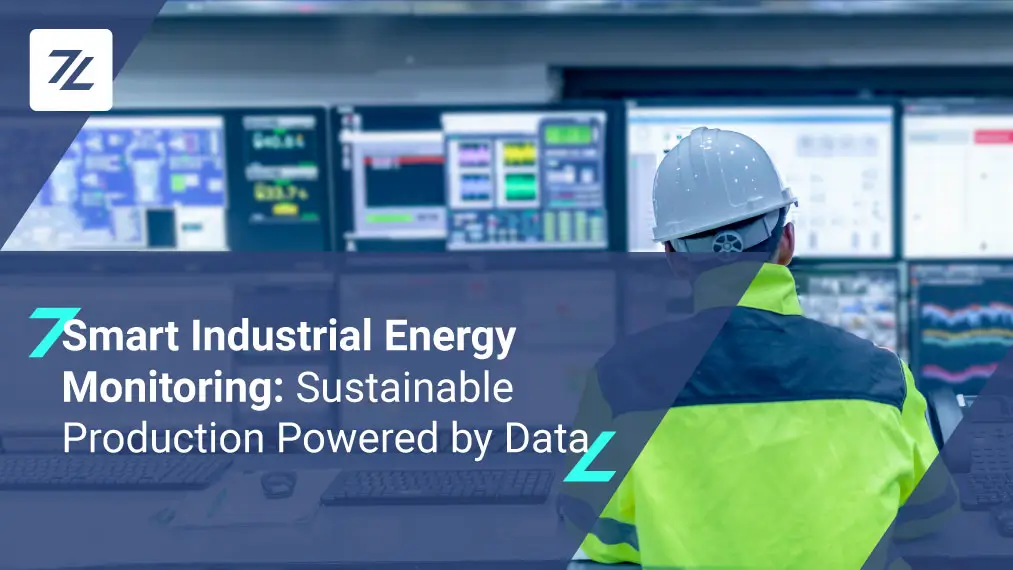The importance of the environment and its sustainability has become a central theme in many Industry 4.0 scenarios and beyond, driving new technologies and new design choices to reduce, eliminate or improve impacts on global resources.
Agriculture is certainly one of the sectors most affected by innovation and is evolving toward smarter approaches for resource optimization, crop accuracy, and product quality when combined with IoT technologies.
Being able to save resources, especially natural ones, is becoming one of the main innovative objectives in all sectors, and, with the help of IoT technologies, it is possible to achieve excellent results and benefits in these contexts.
In agriculture, for example, saving resources means minimizing waste by maximizing the “harvest”, not only in terms of energy consumed but also by improving the quality of products.
Nurset: Smart Agriculture with Zerynth’s IoT platform
In this context, Zerynth’s IoT platform has made a strong contribution to analyzing the health of plants and monitoring irrigation systems, as a result of the Nurset project developed for Pierucci Agriculture.
Specifically, the Nurset project considered potted crops and standard irrigation systems (drip or rain) controlled by opening or closing solenoid valves. Its development, and the entire ecosystem, can be extended and adapted to other types of crops or alternative irrigation methods.
What are the quantities to be monitored and with which sensors?
Very often, it is possible to deduce the health of a plant from its appearance (color of leaves, the strength of branches, etc.) that derive directly from its “diet” or from the soil conditions in which it is growing.
Translating this into terms compatible with the IoT world, plant health is directly proportional to the following quantities that can be taken from the ground:
- Temperature
- Humidity
- Electrical conductivity (proportional to the percentage of fertilizer)
Sensors capable of measuring these quantities, within the confines of the Nurset project, “intelligent” sensors that can measure the 3 data points and make them available via the Modbus RTU industrial protocol on RS485 serial interface were selected.
By exploiting the 2 differential channels of the RS485 serial interface, data collection is robust against disturbances related to analog noise deriving from the cable length. – The installation point of the hardware setup, in fact, can be tens of meters from the plant being observed.
Figure 1. Compact stainless steel sensor mountable on the ground surface
With regards to monitoring the irrigation system, however, there are critical points concerning the consumption of resources (water and fertilizer), the pipe state, and electric use for the pumping system.
In verifying the correct use and operation of the irrigation system, special sensors were installed in order to:
- Measure water consumption → a water meter was installed in the system with a special reed switch for counting the liters taken from the main pipe and used to supply water for the entire nursery
- Check fertilizer consumption → a level sensor was inserted in the fertilizer tank with a special alarm setting to monitor the quantity still available and respective consumption during fertigation phases.
- Monitor how good the condition of the pipeline is → a sensor was inserted in the main pipeline to measure the pressure inside and notify of any anomalies that could lead to breakage in the pipeline. If the system allows, by installing a second pressure sensor so that both are downstream and upstream from a filter, it will also be possible to check the status of the filter and notify if there is any need for cleaning.
- Monitor electric consumption → by means of a current clamp meter placed on one of the main power supply phases of the system, it is possible to check the energy consumption and notify whether there are any current peaks that correspond to anomalies in the pumping motors.
Sensor placement strategy for sample analysis
Each nursery is organized in portions of areas called “holds” in which the potted plants are placed in staggered rows. The number of plants in each hold depends on their size and consequently on the pot size – this ranges from a few dozen for large pot plants (for example those with a diameter of 37 cm or greater) to hundreds for small pot plants (diameters of 18 cm or less).
Figure 2. Standard nursery seen from above organized in holds
It is evident that inside a hold, regardless of the size of the plants inside, the number of pots to be monitored is too great to consider inserting a sensor in each pot; consequently, the acquisition strategy will be to develop a statistical analysis with a sampling of sample plants that represent the best estimate for the conditions of the entire hold.
In this way, plant health considerations of the sample plants can be extended with negligible error even to plants that aren’t monitored directly.
While interviewing various nursery companies in the Pistoia area, it was determined that, inside an average hold, the external perimeter (about 2 rows of plants) contains plants of lower quality than the plants at the center of the hold. Plants at the external perimeter are in fact more subject to atmospheric agents such as wind, which could break some branches or sun which could dry the soil in the pot faster than those that are more shaded in the middle of the hold.
Based on these considerations, there are two main scenarios that can be derived for the selection of plants to be monitored within a hold:
- Sample selection of 3 “central” plants → here it is possible to monitor the plants in the best area; the choice of 3 plants derives from the need to have an average over several samples. In fact, single plants could be sick or not compliant with standards and timely monitoring could lead to incorrect information on monitoring the entire hold. Contrary to this solution is that there will be no data relating to the external area with lower quality plants.
- Sample selection of 2 “central” plants and 2 plants on the external perimeter → here it is possible to monitor the entire hold uniformly (also including the worst area). Contrary to this is that there is greater complexity in terms of wiring and materials used.
Figure 3. Monitoring strategies for estimating the state of plants
The system, as can be seen from the diagram in Figure 3, is installed in such a way as to be as least invasive as possible both in terms of impeding the growth of plants (creation of shaded areas or darkening) and in terms of impeding normal operations in the interior of the nursery (agronomic practices) with the additional possibility of being powered by solar panels and batteries.
Figure 4. Nurset system powered by solar panel and battery.
How to use data extracted from monitoring
In addition to providing these services, Nurset plans to expand in the future to further protect the environment and resources. The first step is the automatic activation of the irrigation system based on plant health, which has already been implemented in two pilot projects.
By inputting data from sensors installed in the pots, correlating it with atmospheric data, and integrating it according to plant type and growing medium, upper and lower thresholds of field capacity can be determined, which in turn sets the relative humidity of the plants and guides the activation or deactivation of the irrigation solenoid valves.
Figure 5. Evolution of the Nurset system for automatic actuation on solenoid valves.
Once these new features are implemented, smart agriculture systems like Nurset can be developed and integrated with a wide range of possibilities, following new irrigation technologies on the one hand and systems with digital integration with inverters and PLCs from an industrial perspective on the other. On the other hand, 4.0 can go deeper by analyzing plant health and the potential for diseases and/or parasites.
The Nurset case is just one example of many IoT technology applications rife in the field of Smart Agriculture and growing interest in the potential of Industry 4.0, as well as environmental sustainability.
Share This Story, Choose Your Platform!
Follow Zerynth on
Latest Posts










